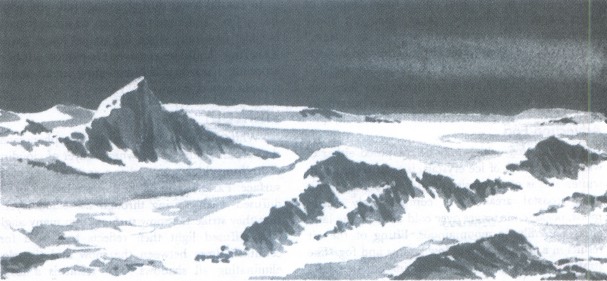Aviation Weather
full text of the classic FAA guide
ARCTIC FLYING WEATHER
A great number of pilots who fly Alaska and the Arctic are well seasoned. They are eager to be of help and are your best sources of information. Alaska and the Arctic are sparsely settled with mostly natural landmarks to guide you as illustrated in figure 136. Before flying in the Arctic, be sure to learn all you can about your proposed route.

Generally, flying conditions in the Arctic are good when averaged over the entire year; however, areas of Greenland compete with the Aleutians for the world's worst weather. These areas are exceptions.
Whiteouts, in conjunction with overcast skies, often present a serious hazard especially for visual flight. Many mountain peaks are treeless and rounded rather than ragged, making them unusually difficult to distinguish under poor visibility conditions.
OCEANIC AND COASTAL AREAS
In oceanic and coastal areas, predominant hazards change with the seasons. In summer, the main hazard is fog in coastal areas.
In winter, ice fog is the major restriction to aircraft operation. Blowing and drifting snow often restrict visibility also. Storms and well-defined frontal passages frequent the coastal areas accompanied by turbulence, especially in the coastal mountains.
Icing is most frequent in spring and fall and may extend to high levels in active, turbulent frontal zones. Fog is also a source of icing when temperature is colder than freezing.
CONTINENTAL AREAS
Over the continental interior, good flying weather prevails much of the year; although during winter, ice fog often restricts aircraft operations. In terms of ceiling and visibility, the summer months provide the best flying weather. However, the number of cloudy days during the summer exceeds those in winter. Thunderstorms develop on occasion during the summer, but they usually can be circumnavigated without much interference with flight plans.
Table of Contents
Previous Section: Weather Hazards
Next Section: In Closing
A PDF version of this book is available here. You may be able to buy a printed copy of the book from amazon.com.
